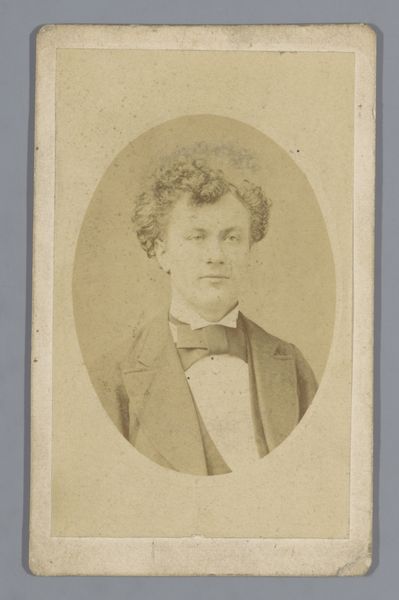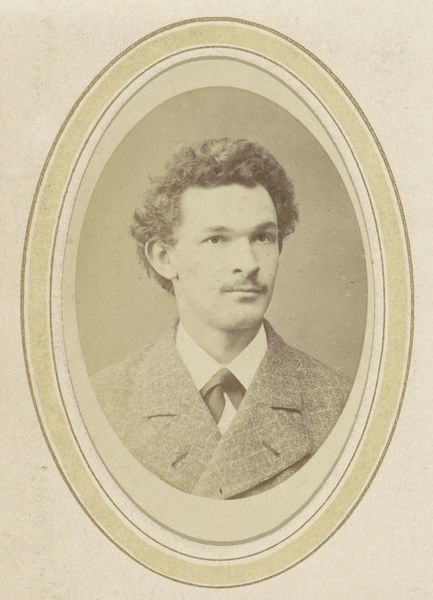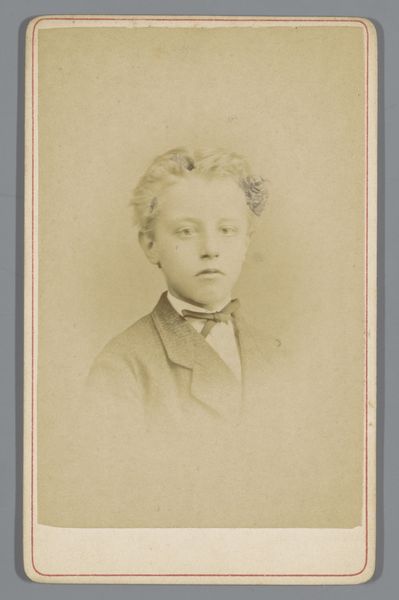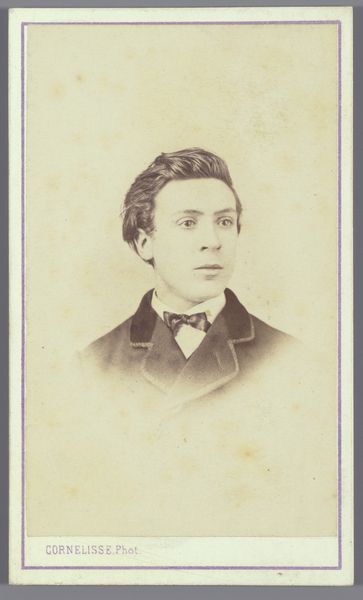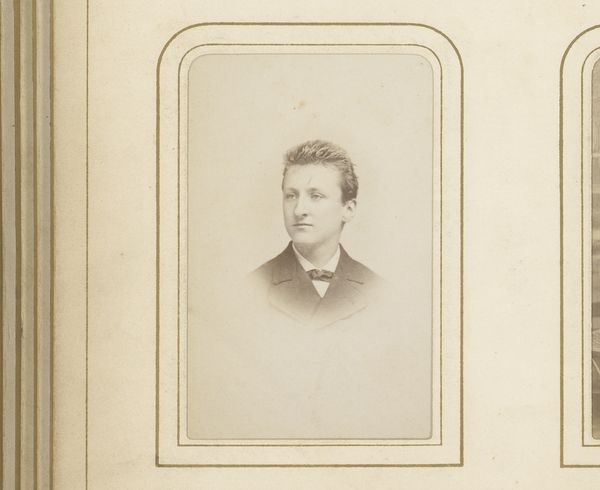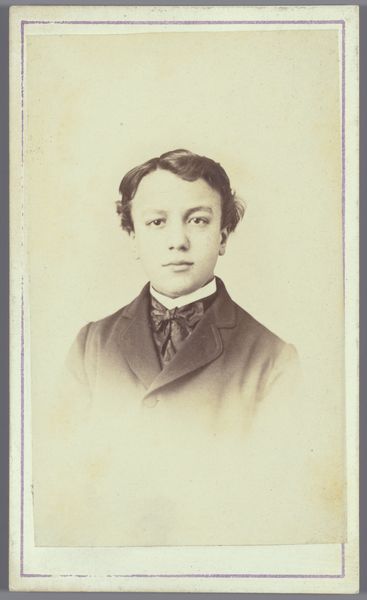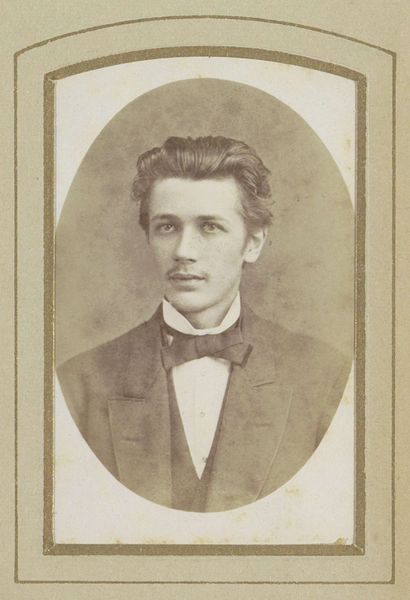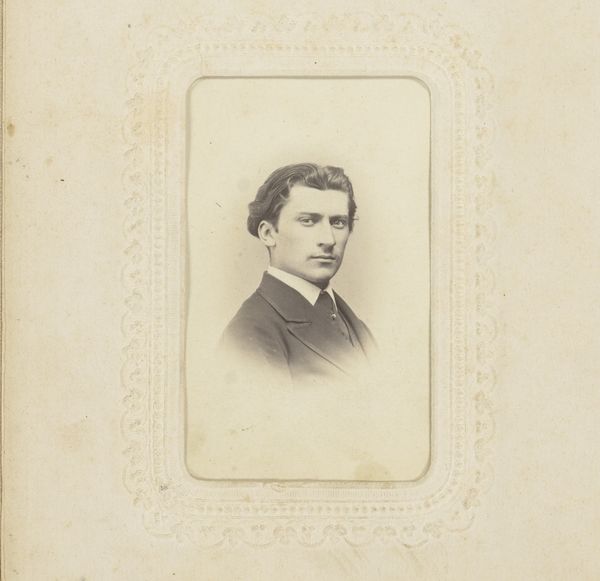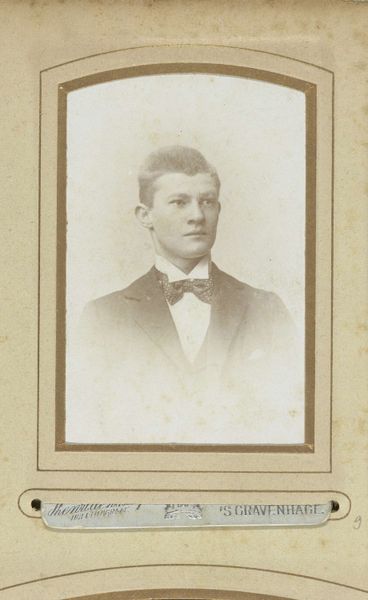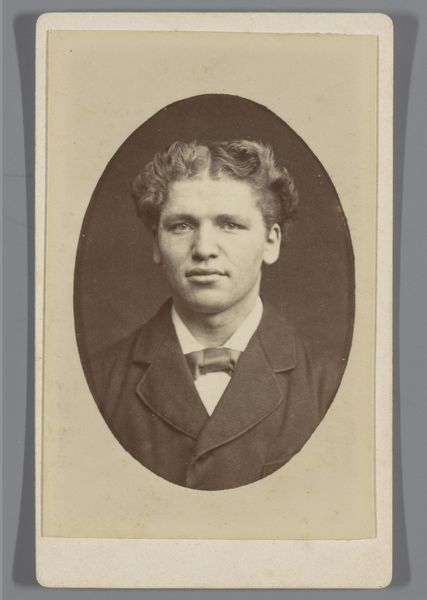
Portret van een jongeman met krullen, aangeduid als Cornelis Groll c. 1869 - 1874
0:00
0:00
photography
#
portrait
#
photography
Dimensions: height 91 mm, width 56 mm, height 101 mm, width 62 mm
Copyright: Rijks Museum: Open Domain
Editor: Here we have Johan Hendrik Hoffmeister's portrait, "Portret van een jongeman met krullen, aangeduid als Cornelis Groll," believed to be created sometime between 1869 and 1874. It's a beautiful vintage photograph. There's something very immediate about its presence, the crispness of the image relative to its age, despite its modest size. What aspects stand out to you? Curator: The framing is critical; the oval vignette constrains our gaze, directing our attention to the figure's countenance. Notice how the sepia tones create a tonal unity across the piece. This limitation enhances the subject's inherent formal qualities—the curls, the clothes. Do you notice how the light emphasizes the textures? Editor: Yes, the details are so sharp! You can see the texture of his tweed jacket, and how each curl in his hair is defined, although I wouldn’t necessarily expect this in this kind of older picture. Curator: Exactly. The success of this early photographic portrait lies in Hoffmeister's careful arrangement of light and dark, revealing the geometric structure within the figure himself. We should consider, what sort of feeling is communicated by Hoffmeister's treatment of the picture plane here? How does his subject position himself, both to the camera and, as a consequence, to us? Editor: That's a perspective I hadn’t considered. The technical limitations and choices have as much, or perhaps more, impact on the outcome as the sitter’s personality or social status. It almost transforms a human being into shapes and patterns. I hadn't really looked at photography in that way. Curator: Precisely. By looking past the immediate subject, we engage in a dialogue with form, composition, and material itself. And in that sense, this photograph embodies a uniquely exciting moment in art history.
Comments
No comments
Be the first to comment and join the conversation on the ultimate creative platform.
